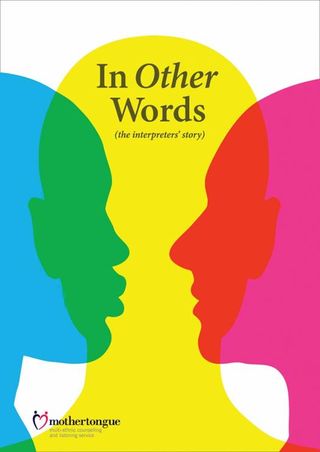Trauma
Translating Trauma: Foreign Language Interpreting in Therapy
For true communication, clients must be allowed to speak their preferred tongue
Posted March 23, 2017
We usually think of therapy as a dyadic exchange between a clinician and client, with family members and other important people present in spirit in the room. But what happens when the therapist and the client do not speak the same language?
All too often, clients who are not native English speakers are simply expected to “do their best” communicating in English, Beverley Costa DPsych. reported at a European Union meeting of experts on interpreting for children in crisis.* What a burden this is! While some clients will want to speak English, others prefer to speak in their first language or a combination of the two. Multilingual people sometimes find it easier to discuss particular events in one of their languages than the other. Sometimes clients prefer the emotional detachment of speaking in their non-native tongue, at least until they can tolerate the strong feelings that may emerge more readily in their first language.
Most therapy clients struggle to make themselves understood as they discuss personal matters that they may have never revealed before. Searching for a word, worrying about using the wrong word, handling confusion about concepts—these additionally baffle and intimidate immigrant clients and may make them drop out of therapy.
Foreign language interpreters in psychotherapy
Alma, 21, crossed from her native Honduras through Guatemala and Mexico over the U.S. border at the age of 17. She endured sexual assault, thirst, extreme heat and hunger on her journey to the U.S. which she undertook to escape the gang violence back home. Two years after immigrating she was waking up in nightmares almost daily, worrying about the family she left behind as well as her own tenuous immigration status. She suffered from panic attacks in response to an ever-widening range of situations including loud noises or men shouting. A caring coworker brought her to a community mental health clinic where she began psychotherapy with Sally, a trauma specialist.
Alma seemed to bond well with Sally, who does not speak Spanish. Sally avoided rushing Alma when she searched for a word. Alma seemed to benefit from several suggested coping strategies, including mindful breathing. However, Sally noticed that Alma sometimes grew frustrated as she tried to express herself. Sally offered to call in an interpreter. Alma agreed, on the condition that they would work with one interpreter only. The professionally trained interpreter, Marta, participated in many but not all of their sessions. It was bumpy at first, but over time they developed a rhythm. Sally saw Alma laugh for the first time in Marta’s presence. The full range of her personality seemed to emerge in Spanish in a way that it had not in English. Alma began to reveal experiences that she had previously declined to discuss.
Foreign language interpreting should be offered when a client first engages with a counseling agency, and repeatedly throughout treatment. As with Alma, interpreters should enhance the client/therapist connection, serving as a bridge between their worlds.
Interpreted therapy conversations can feel awkward at first. Clients may grapple with shame and worry about confidentiality when they expose themselves to the interpreter. Sometimes community interpreters who do not understand psychotherapy or their role in it interfere in sessions. For example:
- An interpreter tells a weeping client not to get upset
- An interpreter tells the client to stop lying—that her father would never do the things she is accusing him of doing
- An interpreter “cleans up” the clients' language, suppressing curse words, baby talk, incoherent phrases, or discussion of sexual matters
- An interpreter fails to convey certain statements in an effort to “protect” the client or the client’s community from losing face
- An interpreter answers a client’s question without conveying the question to the clinician
- An interpreter fails to convey a clinician’s comment or question, believing it is inappropriate or overly intrusive
Similarly, clinicians who are not trained to work with interpreters sometimes:
- Fail to call in an interpreter, not recognizing the importance of allowing clients to speak in their preferred tongue
- Call in an interpreter for the wrong language, assuming that Guatemalans speak Spanish or Haitians speak French, when they may speak a Mayan language or Kreyol, respectively.
- Grow impatient and resentful about the extra time required to communicate in an interpreted session
- Speak too quickly, hindering the interpreters’ ability to work well
- Allow an interpreter to take over a session, and then grow angry if the session does not go in their desired direction.
- Obligate the interpreter to break bad news to a client, alone.

Directed by Beverley Costa, the British nonprofit, Mothertongue, has developed training and supervision models for multilingual therapists to help them feel confident working therapeutically in their different languages. The Mothertongue website also contains training videos and materials for clinicians worldwide who want to understand the dilemmas of their language minority clients, including how to work with clients through a foreign language interpreter. Mothertongue also provides psychotherapy services to clients in fifteen languages where the interpreter is a regular part of the psychotherapy team. They provide supportive services for people from language minority groups ranging from psychotherapy to a knitting group where participants can get out of the house and into a non-pathologizing context with other women.

Bottom line: When clients do not speak the clinician's preferred language, the burden is on the clinician to adapt and accommodate--just as we would to a client's age or disability.
The three resources listed below provide guidance to clinicians who work with language minority clients.
* Co-minor Inquest II, Budapest, Hungary.
References
Balogh, K. & Salaets, H. (2015). Children and justice: Overcoming language barriers. Criminal Justice Programs of the European Union. Available at: https://www.arts.kuleuven.be/tolkwetenschap/projecten/co_minor_in_quest…
Costa, B. (2016) Team Effort – training therapists to work with interpreters as a collaborative team, International Journal for the Advancement of Counselling, 39(1), 56-69. DOI:10.1007/s10447-016-9282-7
Fontes, L.A. (2008). Interviewing Clients across Cultures: A Practitioner’s Guide. New York: Guilford.


